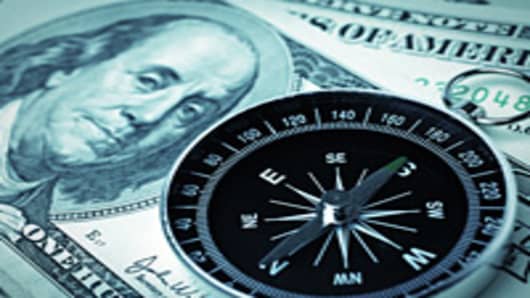Those 401(k) programs that became 201(k) plans during the financial meltdown in 2008 are back in vogue, with employer participation returning to pre-crisis levels.
Some 73 percent of companies are offering matching contributions into the popular retirement programs, which saw savings rates and employer participation wane along with the plans' value during the financial crisis.
Gallows humor at the time featured jokes that the 401(k) nest eggs had shrunk so much that they should be called 201(k) plans.
But with confidence improving gradually and the 401(k) plans considered a powerful employee retention and attraction incentive, the tide is turning for the program.
"The story behind these numbers is there's good news here for employees," said Dave Gray, vice president for client experience in Charles Schwab's retirement plan services division. "There are employers who might have suspended the match because of economic issues...It demonstrates a positive sign."
The 401(k) plan allows employs to put up to $17,000 in tax-free money a year into a plan that usually features a variety of funds and with some match from employers. Some 23.4 million American workers participate in 64,455 employer-sponsored 401(k) plans that hold about $1.4 trillion in assets, according to the Employee Benefit Research Institute.
Though the U.S. and global economies remain teetering on recession, cash levels at American corporations have soared to about $2 trillion and the talent search has gotten more competitive.
Rather than hire and reduce the 8.3 percent unemployment rate (learn more),companies instead are deploying cash internally to help maintain employees.
The percentage of employers offering 401(k) matches was at 73 percent in 2005, peaked at 76 percent in 2006 and fell to 67 percent in 2009. The savings rate for participants slipped from 7.23 percent in 2007 to 6.91 percent in 2011, according to Schwab data.
"Our expectation would be that we'll continue to see this tick up over the next couple of years, assuming nothing unforeseen happens in the economy," Gray said. "As folks get more comfortable, as employers get more comfortable, we expect that we'll see that rate slowly tick back up."
The typical employer match is 50 percent of employee contributions up to 6 percent of taxable income. While that number doesn't fluctuate much, employers' approach to 401(k) plans has.
Companies have become much more aggressive in providing investment advice to employees, many of whom bailed out of risk assets during the crisis.
Participant advice availability has soared to 83 percent of employers, nearly double the 42 percent in 2005. Automatic enrollment, in which companies provide a certain matching level even if employees don't contribute, moved from just 5 percent in 2005 to 42 percent in 2011.
"People who get professional help, who have somebody manage their retirement plan for them, almost always are better off than people who make their own investment choices," Gray said. "There's a growing sense among employers that employees need help, that they can't make these decisions on their own."
Managers can help employees diversify their holdings and stay calm during stock markettumult. Gray said 92 percent of Schwab clients "stayed the course" and are in "much better position than somebody who sold out at the wrong time and never bought back in."
The Standard & Poor's 500 has more than doubled off its March 2009 low. But the index has just recently reached the point where an investor who bought in at the market top on Oct. 9, 2007 would be back to even.
Somebody putting $100,000 in an S&P 500 index fund would have seen the value drop to $45,000 at the low. Since then, the investment, including dividends, would be back to full value, according to calculations from Wells Fargo.



